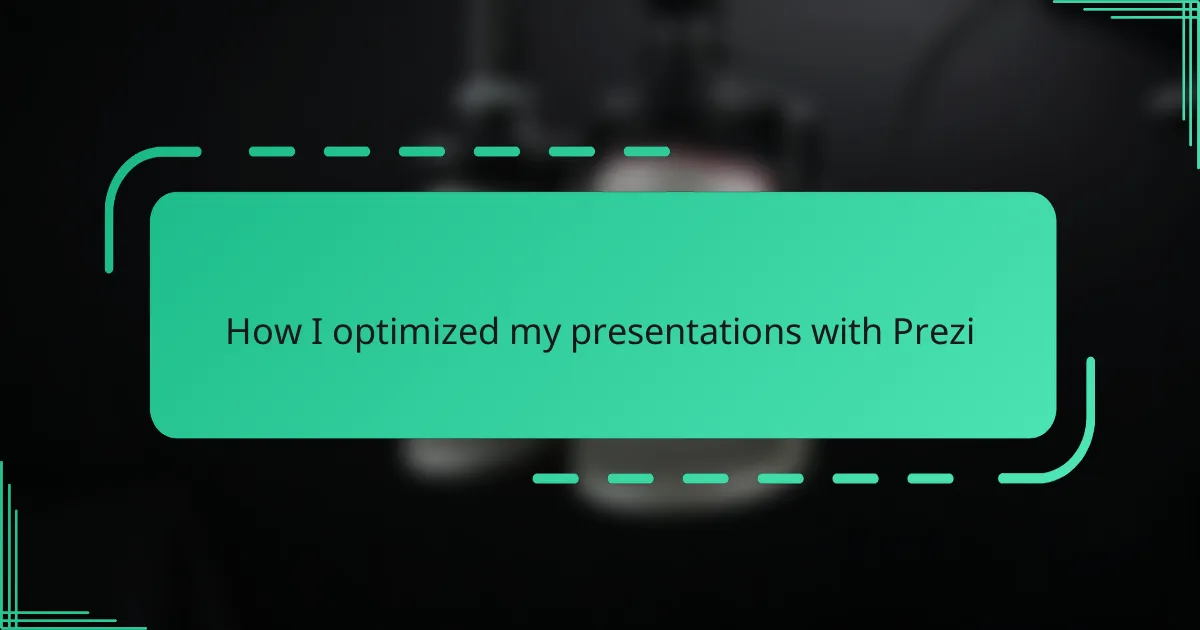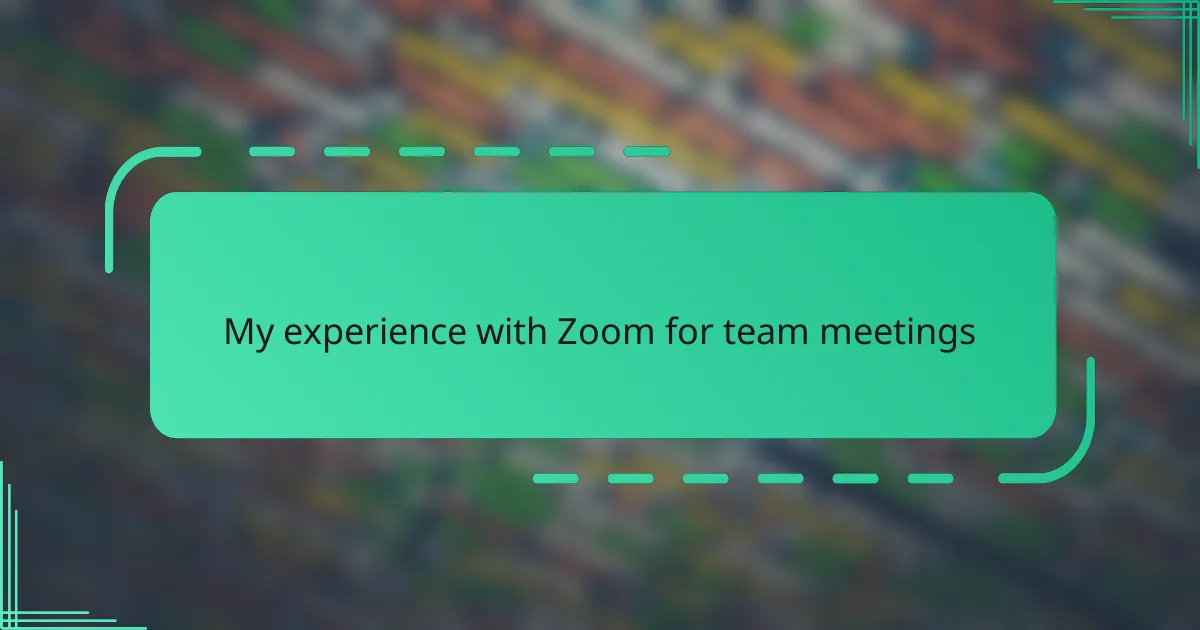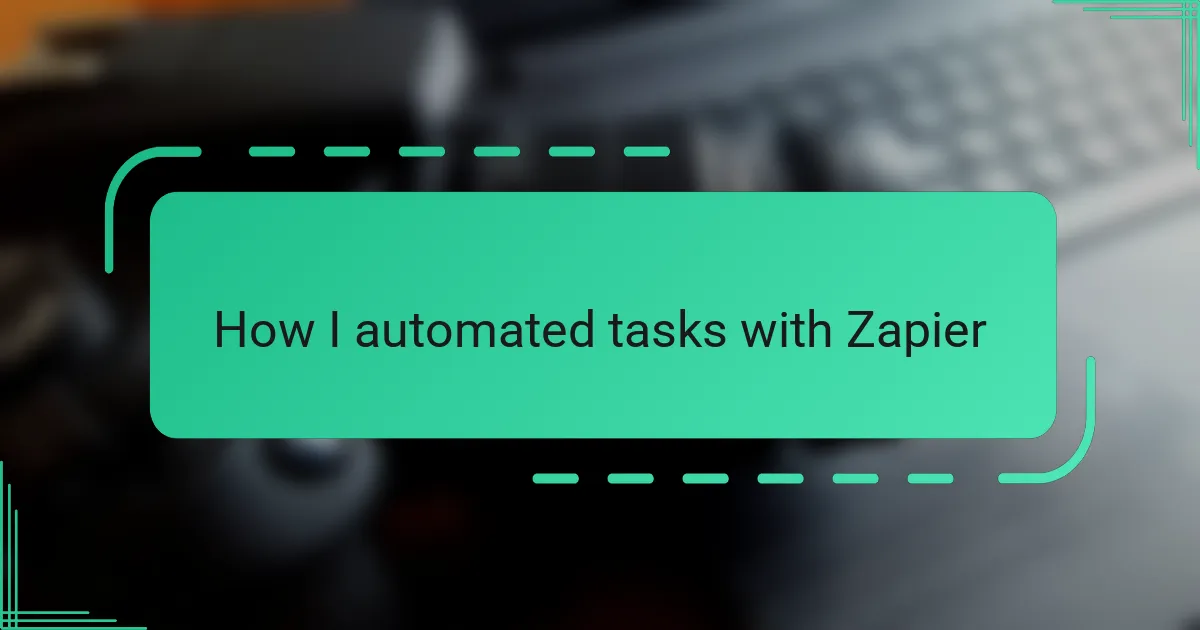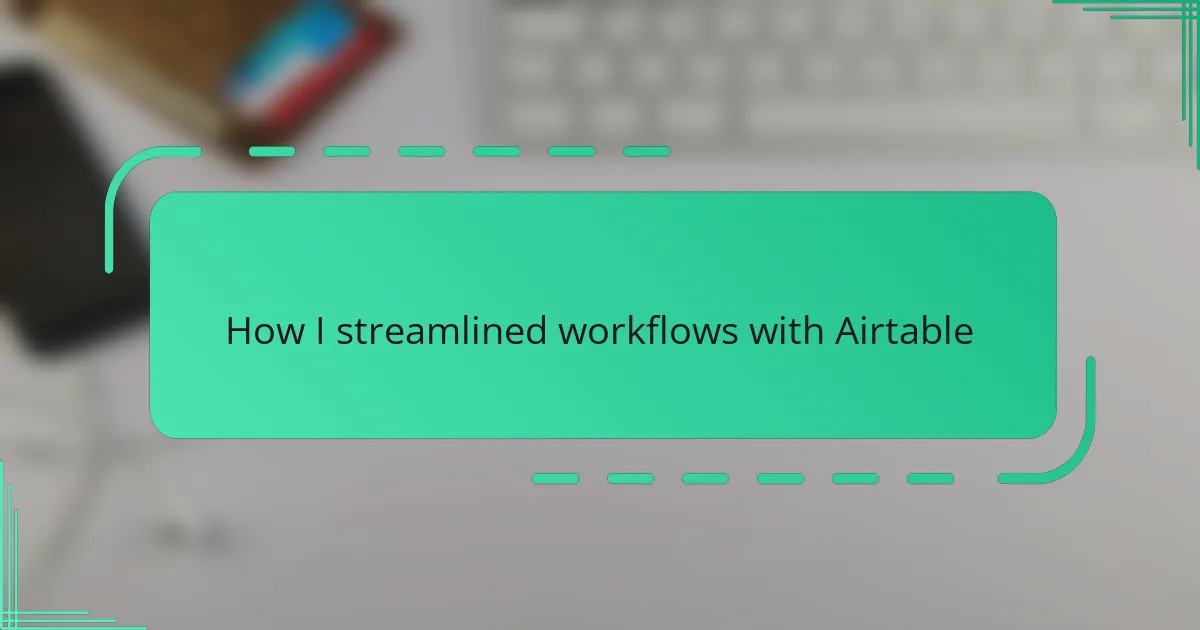Key takeaways
- Presentation software has evolved, enabling more creative and engaging formats beyond traditional slides, such as Prezi’s zoomable canvas.
- Prezi offers non-linear navigation and visually dynamic options, helping presenters focus audience attention and create a narrative flow.
- Successful presentations require clear organization, purposeful pacing, and effective visual storytelling to connect with the audience emotionally.
- Collaboration tools in Prezi enhance teamwork, allowing real-time editing and improving overall presentation efficiency.
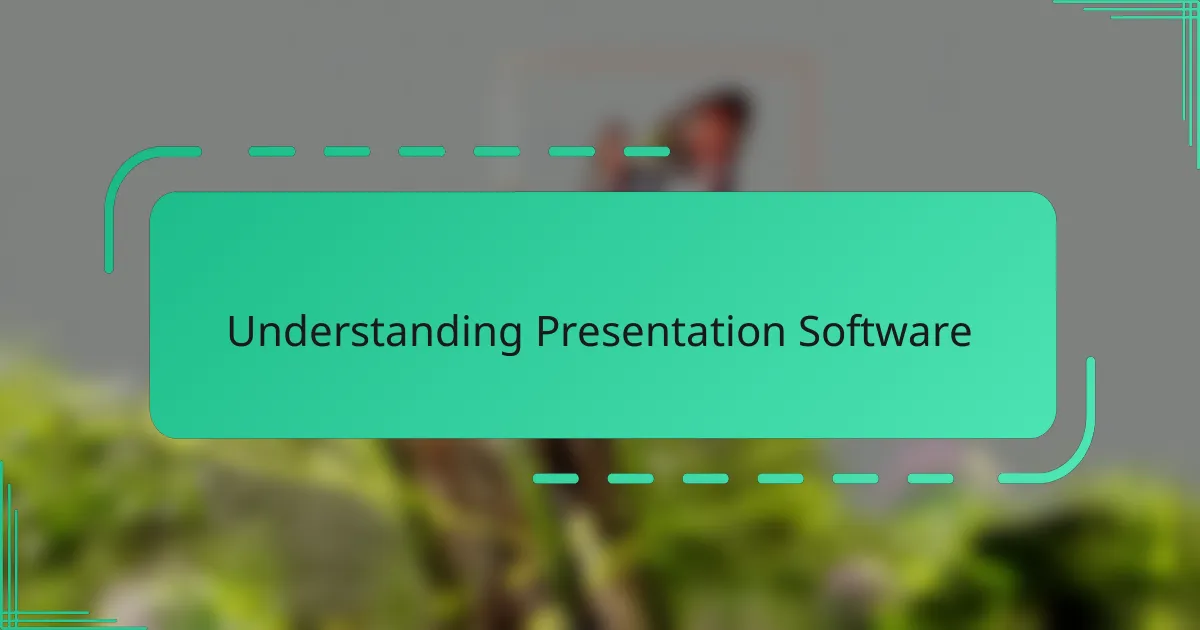
Understanding Presentation Software
Presentation software has come a long way from simple slide decks filled with bullet points. When I first explored these tools, I realized they are more than just digital note cards—they’re a way to tell a story visually. Have you ever felt stuck trying to make your ideas come alive on screen? That’s exactly where the right software can make all the difference.
I found that understanding how various presentation tools structure content helped me see the potential beyond just listing facts. Some platforms focus on linear slides, while others encourage a more dynamic, zoomable canvas—like Prezi does—which revolutionized how I engage my audience. It made me wonder: why stick to traditional slides when you can create something more fluid and immersive?
From my experience, grasping these nuances isn’t just about picking a tool; it’s about shifting your mindset on how presentations can flow. This clarity opened doors for me to experiment creatively, making each presentation feel less like a chore and more like an opportunity to connect. Do you think your current software is helping you tell your story as effectively as it could?
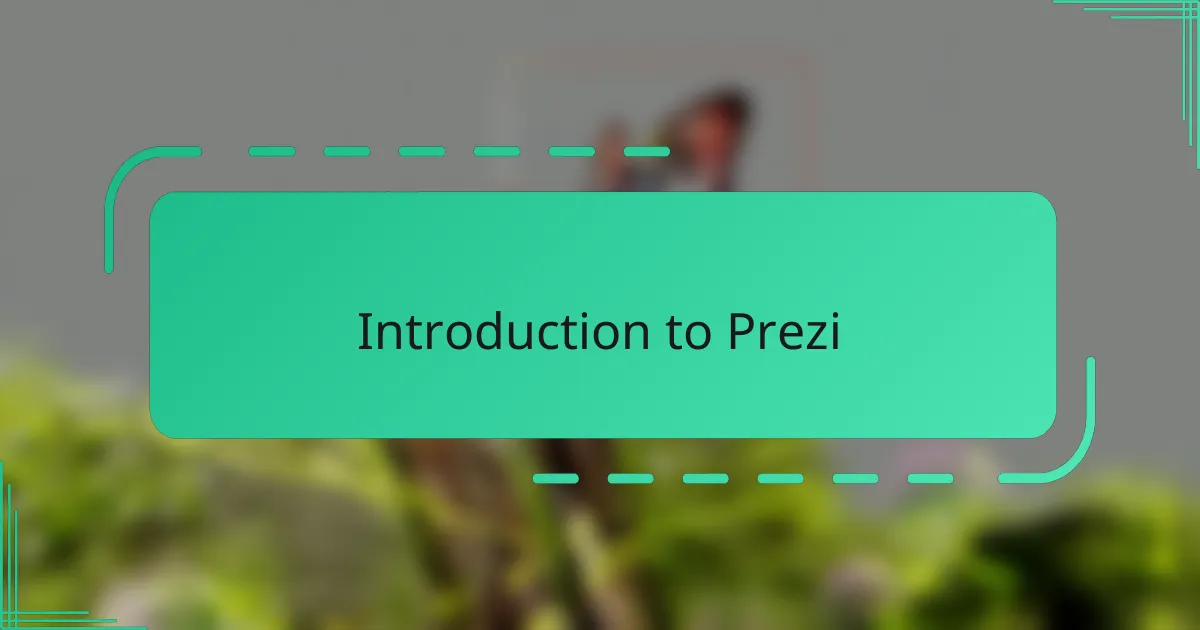
Introduction to Prezi
Prezi caught my attention because it breaks away from the classic slide-by-slide format. Instead of flipping through pages, you navigate a large, zoomable canvas that feels almost like exploring a map of your ideas. At first, the idea of moving around a virtual space felt a bit unusual, but I quickly realized how much more engaging it made my story.
What makes Prezi stand out to me is how it lets you control pacing and focus, zooming in and out to highlight key points. It’s like guiding your audience through a journey rather than just showing them static information. This approach made me rethink how presentations could be more interactive and memorable.
Have you ever been in a meeting where slides felt dull and repetitive? Prezi was the tool that helped me break that cycle. It encouraged me to visualize connections between ideas instead of just listing them, turning my presentations into conversations rather than monologues. That shift truly changed the way I communicate with any audience.
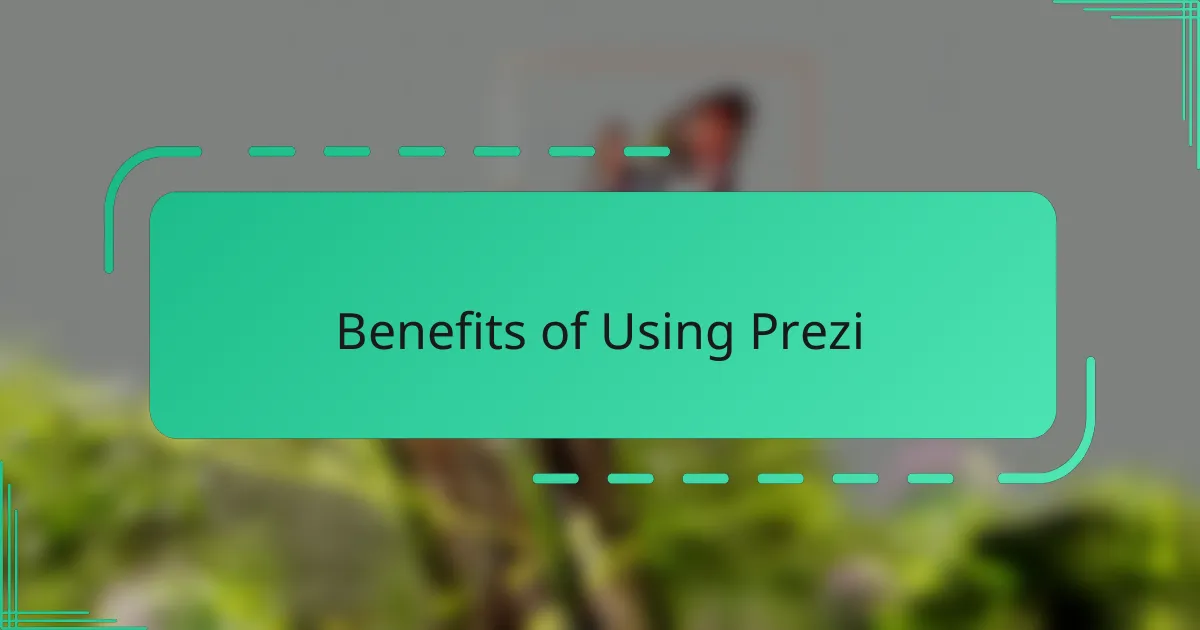
Benefits of Using Prezi
One of the biggest benefits I found with Prezi is its ability to make presentations visually dynamic. Instead of clicking through dull slides, I could zoom smoothly between ideas, which kept my audience genuinely interested. Have you ever noticed how a well-timed zoom can refocus attention and emphasize a point without me having to say a word?
Another advantage is the non-linear format. Early on, I struggled with fitting my thoughts into a strict slide order—Prezi changed that. It let me explore ideas in a flexible way, like taking detours that felt natural during my presentations. This freedom not only made my talks more engaging but also gave me confidence to adapt on the fly when questions popped up.
Lastly, Prezi’s visual storytelling helped me connect emotionally with my listeners. I remember the first time I used it to map out a complex project; seeing everything flow and interlink made my message clearer. Isn’t it amazing how a simple design shift can transform data into a narrative that resonates? For me, that was a game changer.
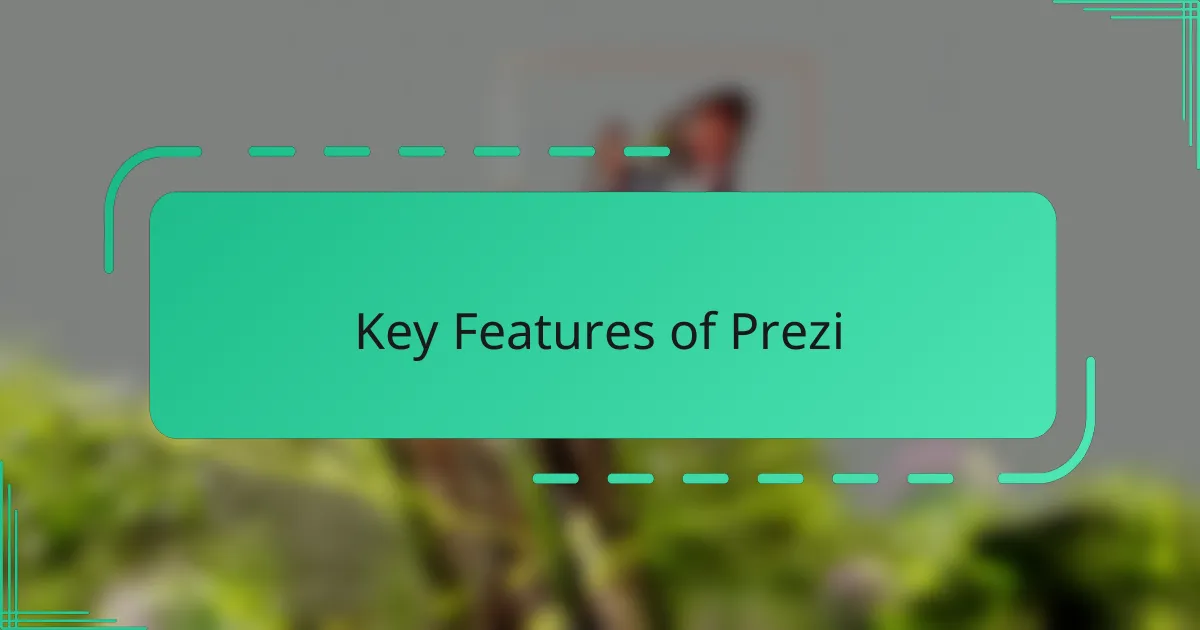
Key Features of Prezi
What really drew me to Prezi were its standout features like the zoomable canvas and non-linear navigation. Instead of flipping through fixed slides, I could create a visual map where I control the journey, zooming in on details and pulling back for the big picture. This feature alone made my presentations feel alive and kept my audience curious about what comes next.
Another feature that won me over is Prezi’s intuitive templates and customizable paths. They gave me a solid starting point but still let me tailor the flow to match my story. Have you ever struggled to keep your presentation organized while making it engaging? Prezi’s flexible structure solved that problem for me, letting me pivot smoothly when new questions arose.
I also appreciated the collaborative tools Prezi offers. When working with a team, being able to edit in real-time from different locations saved me countless hours and headaches. It’s not just about design—it’s about how technology can bring your team together, making the whole process more efficient and enjoyable. Wouldn’t you agree that smooth collaboration is key for powerful presentations?
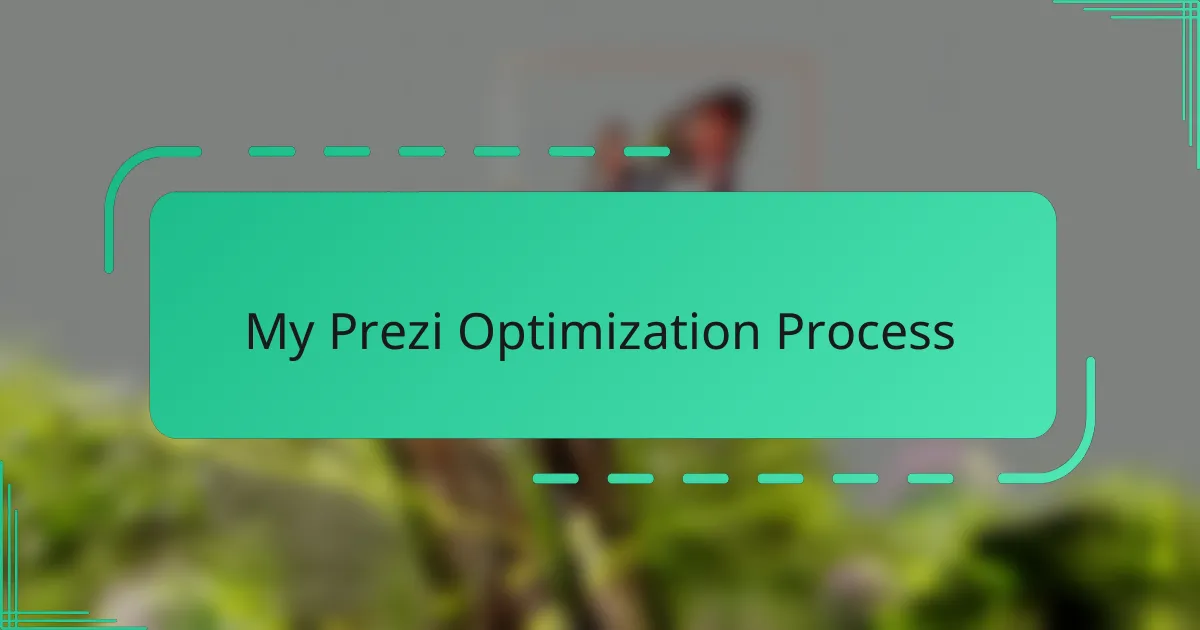
My Prezi Optimization Process
My optimization process with Prezi began by rethinking how I organize content. Instead of forcing my ideas into a linear sequence, I started mapping them out like a journey, which felt more natural and less restrictive. Have you ever tried to fit a complex story into rigid slides? That’s when Prezi’s zoomable canvas became a game changer for me.
Next, I focused on pacing and transitions. I experimented with how and when to zoom in or out, realizing that a well-timed move could emphasize important points without me saying a word. It’s amazing how these visual cues keep the audience attentive—something traditional slides never accomplished for me. I learned that pacing is not just about what you say, but how you guide the viewers’ eyes.
Finally, I embraced Prezi’s flexibility to respond spontaneously during presentations. When questions popped up, I could effortlessly navigate to related sections without breaking the flow. This adaptability boosted my confidence and made the presentations feel more like conversations than lectures. Have you noticed how this kind of interaction changes the energy in the room? For me, it transformed the entire experience.
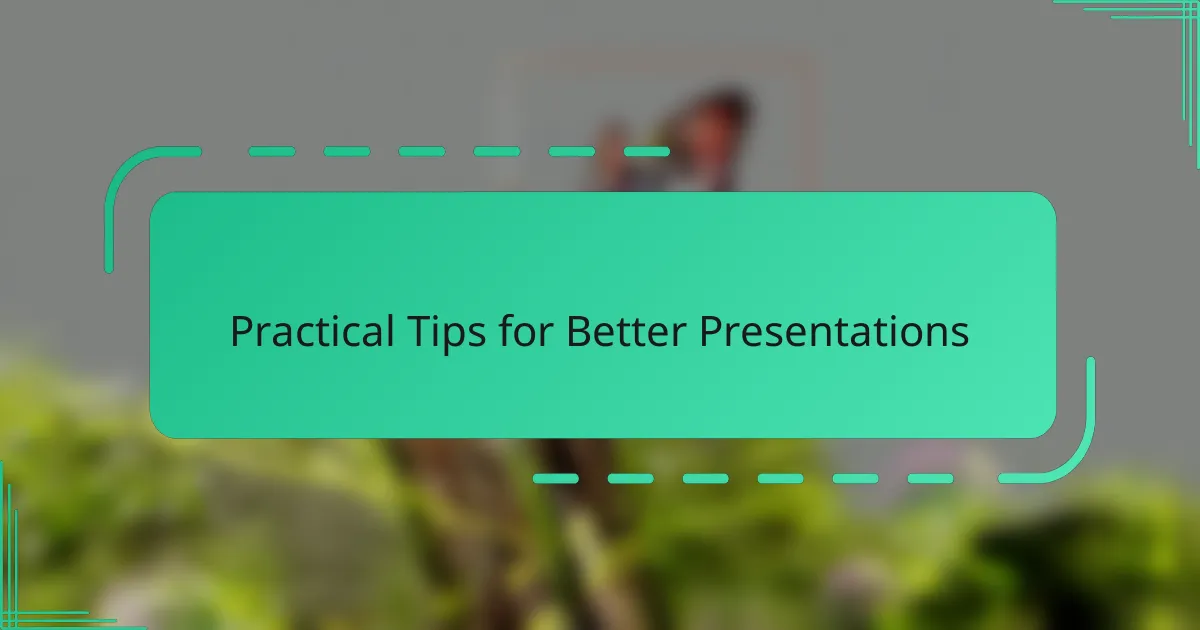
Practical Tips for Better Presentations
One practical tip I found invaluable was to keep my Prezi presentations visually clean. Early on, I made the mistake of overcrowding my canvas with too many elements, which overwhelmed both me and my audience. Have you ever felt lost staring at a cluttered slide? Simplifying visuals helped me focus attention where it mattered most.
Another strategy that worked wonders was rehearsing the flow of my zooms and transitions. At first, I underestimated how pacing impacts engagement—rushing through or lingering too long can detract from the message. Through trial and error, I learned to use smooth, purposeful movements that felt natural, almost like telling a story face-to-face.
Lastly, I discovered the power of linking key ideas visually to create a narrative path. Instead of jumping abruptly between topics, I connected them logically on the canvas, making it easier for my listeners to follow along. It made me realize presentations are not just about information but about guiding the audience on a meaningful journey. Have you tried weaving your points together visually? It’s a subtle change that boosts clarity and keeps everyone hooked.
